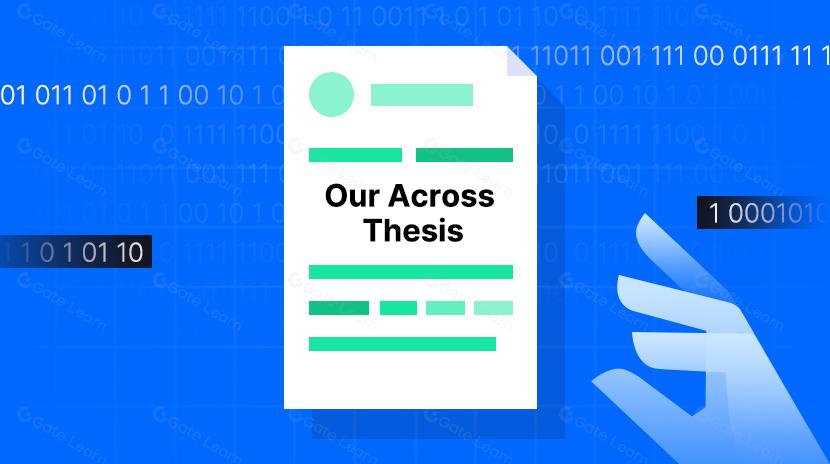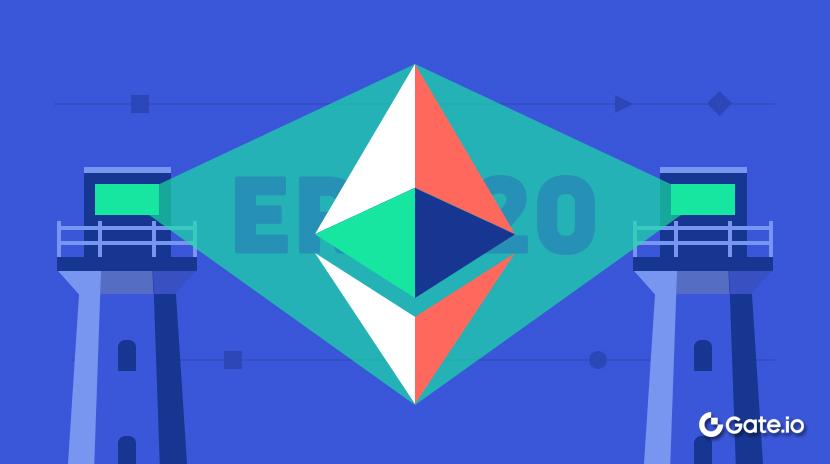Ethereum Returns to the L1 Narrative as Solana Accelerates Its Consensus
The article discusses in detail the technical principles of Alpenglow, including its transformation of the Turbine mechanism and innovations in the node confirmation mechanism. Through an analysis of the consensus mechanism in the era of large-scale nodes and the specific implementation methods of Alpenglow.Ethereum begins supply-side reform.
After the dream of the infinite garden shattered, Vitalik constrained the human debt of L2/Rollup and took a more proactive stance to defend the L1 track. The “speeding up and reducing costs” plan for the Ethereum mainnet has been put on the agenda. The shift to Risc-V is just the beginning; how to catch up with or even surpass Solana in terms of efficiency will become the main focus going forward.
Solana continues to expand consumption demand scenarios.
Solana’s answer is Scale or Die, firmly committed to the path of becoming a strong L1. In addition to the Firedancer developed by Jump Trading entering the deployment process, at this year’s Solana conference in New York, the Anza team’s Alpenglow consensus protocol took the lead and attracted everyone’s attention.
The ultimate dream of Ethereum is to be a world computer, coincidentally, Alpenglow is as well.
20% Security Consensus in the Era of Large-Scale Nodes
Starting with Bitcoin, the number of nodes and their dispersion are synonymous with measuring the degree of decentralization of a blockchain network. To avoid centralization, the security threshold is set at 33%, meaning that no single entity should exceed this proportion.
With the boost of capital efficiency, Bitcoin mining ultimately trends towards mining pool clusters, while Ethereum becomes the main stage for Lido and CEX. Of course, this does not mean that mining pools and Lido can control network operations; in the “maintaining the network - earning incentives/management fees” model, they have no malicious motives.

Image description: The Scale Law of Blockchain Nodes
Image source:@zuoyeweb3
However, measuring the health of a network must consider its scale. For example, in a small group of 3 people, a 2/3 majority is needed to be considered effectively operating. Simply pursuing the minimum security guarantee of any 1/3 is meaningless, as the remaining two can easily collude, with very low costs for malicious actions and very high gains.
If it is a large-scale network of 10,000, as Etherscan indicates the current scale of Ethereum nodes, there is no need to pursue a 2/3 majority vote. Outside of the incentive model, most nodes do not know each other, and the coordination cost of collusion between Lido and Binance is also too high.
If we reduce the number of nodes and the consensus ratio, can we “speed up and reduce costs”?
As everyone can imagine, Alpenglow thinks the same way and is ready to do just that, maintaining a scale of 1500 nodes for Solana while reducing the security consensus to 20%. This not only increases the node confirmation speed and allows nodes to earn more mainnet incentives, but also encourages the expansion of node scale, for example, to around 10,000.
It could either be the effect of 1+1>2 or it could breach existing security mechanisms, both of which are possible.
However, I really like it. Solana should follow the American chain, conspiracy group, and centralized route, participating in public chain competition as the opposite of Ethereum.
Modifying Turbine, or moving towards DPoS
The theoretical idea of Alpenglow is that in the era of large-scale nodes, a strong consensus quantity is not required, because in the PoS mechanism, wrongdoers need to mobilize a huge amount of capital to gain control. Even at a scale of 20%, at current prices, Ethereum would require 20 billion dollars, and Solana would need 10 billion dollars.
With 10 billion dollars, why not do something good? Only a madman would try to control the blockchain, and they would also face the backlash of the remaining 80% of the nodes, unless it’s a state action.
In practice, Alpenglow roughly divides the entire process into three parts: Rotor, Votor, and Repair (for a more detailed division and workflow, refer to its paper). To some extent, Alpenglow is a deep modification of the Turbine mechanism, so we will briefly introduce Turbine.

Image description: Block broadcasting mechanism
Image source:@zuoyeweb3
Turbine is the block propagation mechanism of Solana. In simple terms, Turbine is the messenger that spreads block information to achieve consensus confirmation among all nodes.
In the early design of Ethereum, block broadcasting used the Gossip protocol, which in Chinese is akin to “rumors or hearsay”. Any node can act as an initial messenger, and P2P communication can occur between any two nodes, ultimately achieving a global confirmation effect, similar to “I have a message, I’ll only tell you, but please don’t tell anyone else,” and eventually, the whole world will know.
We temporarily skip Turbine and make a comparison using Ripple’s DPOS mechanism. Ethereum/Bitcoin has achieved the ultimate in peer-to-peer communication, so what is the cost?
It is extremely slow and expensive, which is easy to understand. The random and aimless pairing between nodes, although it makes the system more robust and resistant to censorship, takes more time. The expense comes from the cost considerations of the nodes; since information propagation among other nodes is slow and they need to maintain their own operation, this cost is naturally transferred to users in the form of Gas Fee.
Extreme decentralization will inevitably lead to expensive and slow associated issues.
Ripple’s DPOS has gone to another extreme, initially setting up only 21 supernodes across the network, with extreme centralization completely resolving any side effects. The mainnet nodes have now increased to 179.
Turbine, on the other hand, moves towards a middle ground, neither adopting Ethereum’s Gossip mechanism nor taking the wrong path of reducing the number of nodes, but instead implementing hierarchical propagation of network nodes:
- In each cycle, nodes are divided into Leader, Relay, and more ordinary nodes, only Leader nodes can send block broadcast information.
- A small number of Relay nodes continue to broadcast information to more ordinary nodes after receiving it. This process is called the Turbine Tree, which resembles a tree with a clear hierarchy.
In Alpenglow, the variant of the protocol is called Rotor, which essentially refers to the orderly propagation of block messages, where any Leader or Relay node is not fixed.
Votor is a node confirmation mechanism. For example, in the Alpenglow concept, if the first round of node voting reaches an 80% ratio, meeting the minimum of over 20%, it can be quickly passed directly. If the first round of voting is above 60% but below 80%, a second round of voting can be initiated, and if it exceeds 60% again, it can be finally confirmed.
If that still doesn’t work, then we can use the Repair mechanism. However, I personally feel that this is similar to the challenge period of Optimistic Rollups. If it really comes to this, there is a high probability that the protocol will fail. The FDIC couldn’t stop the run on Silicon Valley Bank.
Unlike the approach of violently stacking hardware and software resources to increase bandwidth, Alpenglow’s starting point is to reduce the block consensus generation process.
If the data blocks are kept as small as possible, for example, limited to around 1500 Bytes, and the generation time is short enough, such as in the current stage of testing, where in extreme cases it can reach 100ms, which is currently 1% of 10s. (1 s = 1000 ms, though this is questionable; in real large-scale applications, conditions may not be so ideal, but it is still quite frightening.)
Conclusion
After MegaETH, the existing L2 basically comes to an end. With no support for Solana in SVM L2, there is a practical need for the Solana mainnet to continue expanding. Only if the mainnet TPS surpasses all competing projects can the concept of Solana as an Ethereum killer be fully realized.
Alpenglow can also be applied to Solana, theoretically, any PoS chain, including Ethereum, can use its mechanism, as we introduced earlier.OptimumSimilarly, existing blockchain research has reached the technical edge and urgently needs more help from computer science and even sociological concepts.
IBM once claimed that the world will only need five mainframes in the future. If the internet based on HTTP-TCP/IP is one, BTC is one, and Ethereum is one, then there isn’t much room left for Solana.
Statement:
- This article is reprinted from [Zuo Ye’s Crooked Neck Mountain],the copyright belongs to the original author [Zuo Ye’s Crooked Neck Mountain] If there are any objections to the reprint, please contact Gate Learn TeamThe team will process it as soon as possible according to the relevant procedures.
- Disclaimer: The views and opinions expressed in this article are solely those of the author and do not constitute any investment advice.
- Other language versions of the article are translated by the Gate Learn team, unless otherwise stated.GateUnder such circumstances, it is prohibited to copy, disseminate, or plagiarize translated articles.
Related Articles

What Is Ethereum 2.0? Understanding The Merge

Reflections on Ethereum Governance Following the 3074 Saga

Our Across Thesis

What is Neiro? All You Need to Know About NEIROETH in 2025

How To Claim The Jupiter Airdrop: A Step-By-Step Guide


